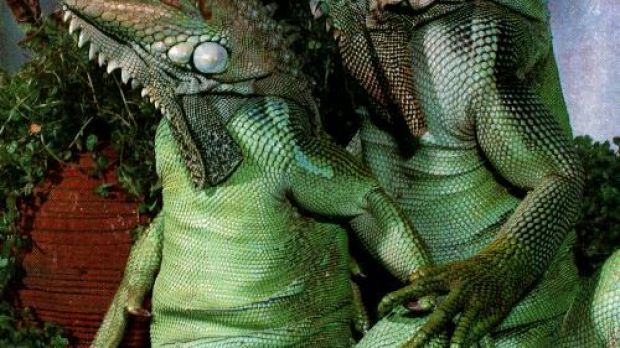They are separated since the Jurassic era (175 million years ago) by the Atlantic ocean, still the European common lizard (Lacerta vivipara) has been found to display the same love game as a North American lizard, the side blotched lizard (Uta stansburiana). "The triangle of competing strategies may be far more common than previously recognized--and may even shape the way humans behave," said lead author Barry Sinervo, professor of ecology and evolutionary biology at the University of California, Santa Cruz.
"The models we propose in this paper are a general phenomenon for all animals, humans included. When faced with the task of gathering food or finding mates, you either cooperate, or take by force, or take by deception. Those are the three ways you can make a living in any social system. It's one of those basic games that structures life.", he said.
That's what males of the European common lizards do when they are looking for a sex mate. Their undersides betray their mating strategy: orange bellied males are aggressive brutes invading other lizards' territories to mate by force with any female they can grab. But while they're in 'sex expeditions', yellow-bellied males take advantage of the situation and enter their territory, mating with their unguarded females. White-bellied males fight together to defend their mates, cooperating in chasing away the yellowed bellied individuals.
In 1996, Sinervo described for the first time this dynamic system in the side-blotched lizard of western North America. "What's an incredible surprise is that it's so exactly the same, even right down to the same colors. That's kind of amazing because it says either the game has evolved twice or it's a game that's been played since the time of the dinosaurs, when the two species last shared an ancestor.", said Sinervo.
The different details are that in the case of American lizards, the throats, not the bellies, display the rank colors, and the white-bellies of the Europeans fit the blue-throats of the Americans, but it seems that the lizards see similar hues in the ultraviolet spectrum, which they detect.
Sinervo's team investigated L.vivipara for five years at five locations in the French Pyrenees mountains. The team captured over 250 individuals annually, monitored their successes and failures, and assessed their physical prowess on treadmills.
The social color system formed a steady cycle occurring at each four to eight years in a population. The cycle starts with the dominance of the orange males in the area for 1-2 years. Now, while the orange bullies are gone into the territories of the white-bellied lizards, their unguarded females are easy "preys" for the yellow-bellied males, which father most of the offspring. Yellow males will dominate the next 1-2 years.
White-bellied males can reject successfully the yellow males, so they boom on the next years. But they are easily rejected by the orange bullies, which once again become dominant, and the cycle starts all over again. "Such rock-paper-scissors games may prove to be commonplace throughout the animal kingdom. The dynamic may just be harder for biologists to find in animals that don't broadcast their affiliation with bright colors. Mammals, for example, may use scent as their signal", said Sinervo.
Male lizards are easier to spot due to their coloration. "The population booms and busts of lemmings, voles, and hares could come from a similar interplay among reproductive genes in females." speculated Sinervo.
This could also apply to humans. "We play games along an economic axis, a reproductive axis, a familial axis, a political axis. We've constructed all this complexity around ourselves. Systems with more than three competing strategies could occur, but they would tend to simplify themselves into a triangular rock-paper-scissors arrangement because triangular relationships are mathematically more stable.", said Sinervo.
The team is trying to detect the genes connected to such mating behaviors in the European common lizard. If they match those of the Uta lizard, this means it is an ancestral trait, developed a long time ago, during the dinosaur era. If not, the behavior evolved later. "If the same genes are involved in both species, then it's been played since the time snakes and lizards diverged. These lizards separated from each other even before the Atlantic ripped open. They may have been playing the same old broken record for 175 million years", said Sinervo.

 14 DAY TRIAL //
14 DAY TRIAL // 
